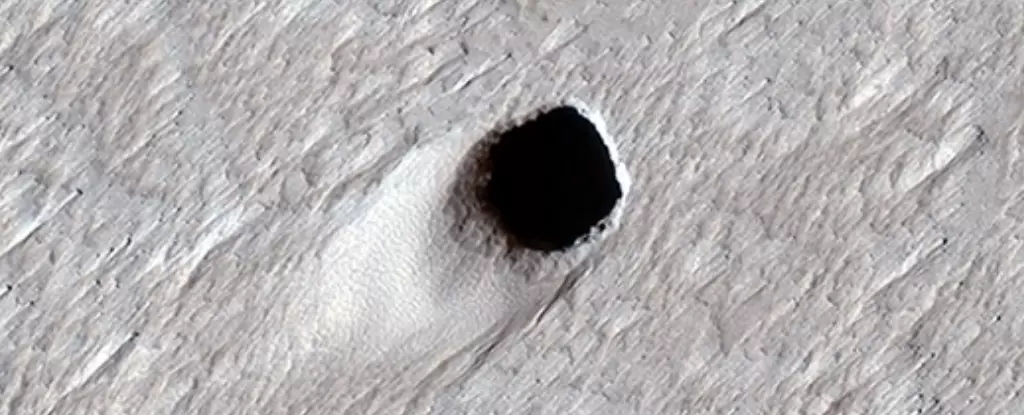The presence of holes or pits on Mars is not a new phenomenon. However, an image captured by the HiRISE camera in 2022 and recently highlighted by the University of Arizona HiRISE’s Picture of the Day has reignited interest in these intriguing features. Situated on the flanks of ancient volcanoes within Mars’s Tharsis region, these holes continue to captivate scientists and space enthusiasts alike due to their enigmatic nature and potential implications for future scientific endeavors.
The holes on Mars are believed to be remnants of underground lava tubes, with their openings, or “skylights,” serving as entry points to these mysterious subterranean structures. While Mars is no longer volcanically active, the presence of these pits suggests the existence of residual lava tubes beneath the planet’s surface. These tubes could potentially offer a safe haven for astronauts during future manned missions to Mars by protecting them from harmful radiation and extreme surface conditions.
Despite their intriguing potential, the true depths and compositions of these Martian holes remain shrouded in mystery. Speculations about the nature of these pits draw parallels to similar features found on Earth, such as expansive lava tubes that could potentially harbor life. However, until further exploration is conducted, the contents and characteristics of these holes will continue to elude scientists.
One of the primary reasons for delving deeper into these Martian holes is the possibility of discovering evidence of extraterrestrial life. The protective and relatively warm environments within the lava tubes could create hospitable conditions for microbial life forms to thrive. By conducting thorough investigations and explorations of these pits, scientists hope to uncover vital clues that could shed light on the potential presence of alien life on Mars.
While orbital cameras like the HiRISE have provided invaluable insights into Martian geology, their capabilities are inherently limited. The angle from which these pits can be observed from orbit restricts the level of detail that can be discerned about their interiors. To comprehensively study these holes, the deployment of rovers or robotic explorers to venture inside and conduct on-site investigations is essential.
As the scientific community continues to uncover the mysteries of Mars, ongoing efforts to further explore these holes and volcanic regions are imperative. By leveraging the capabilities of spacecraft and potential future missions, researchers aim to deepen their understanding of these enigmatic features and potentially unlock profound revelations about the history and potential for life on the red planet.
The holes on Mars stand as enigmatic symbols of the planet’s complex geological past and hold the promise of unlocking critical insights into the possibility of extraterrestrial life. Through continued exploration and dedicated research efforts, scientists are poised to unravel the mysteries of these pits and unearth groundbreaking discoveries that could reshape our understanding of Mars and the broader cosmos.


Leave a Reply